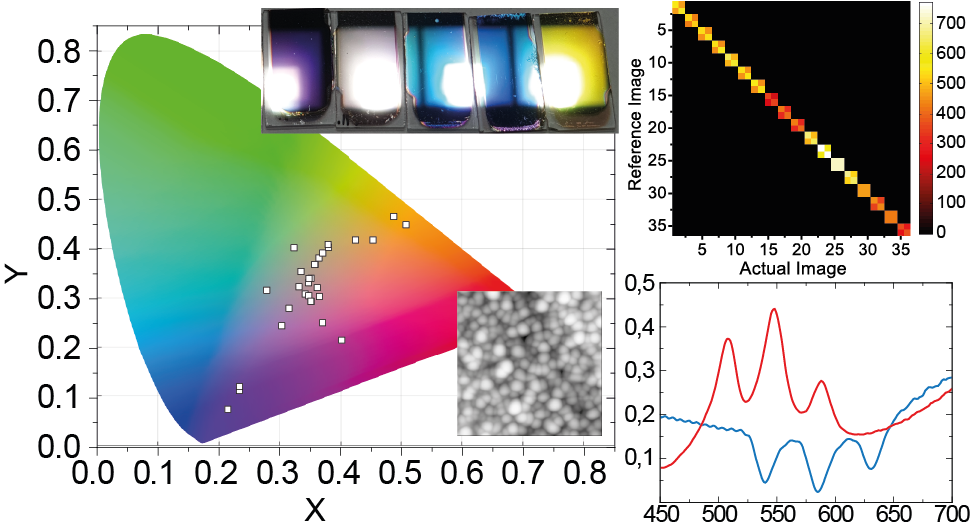
ACS Appl. Mater. Interfaces 2021, 13, 41, 49172–49183 (2021): "Hybrid Plasmonic/Photonic Nanoscale Strategy for Multilevel Anticounterfeit Labels"
Innovative goods authentication strategies are of fundamental importance considering the increasing counterfeiting levels. Such a task has been effectively addressed with the so-called physical unclonable functions (PUFs), being physical properties of a system that characterize it univocally. PUFs are commonly implemented by exploiting naturally occurring non-idealities in clean-room fabrication processes. The broad availability of classic paradigm PUFs, however, makes them vulnerable. Here, we propose a hybrid plasmonic/photonic multilayered structure working as a three-level strong PUF. Our approach leverages on the combination of a functional nanostructured surface, a resonant response, and a unique chromatic signature all together in one single device. The structure consists of a resonant cavity, where the top mirror is replaced with a layer of plasmonic Ag nanoislands. The naturally random spatial distribution of clusters and nanoparticles formed by this deposition technique constitutes the manufacturer-resistant nanoscale morphological fingerprint of the proposed PUF. The presence of Ag nanoislands allows us to tailor the interplay between the photonic and plasmonic modes to achieve two additional security levels. The first one is constituted by the chromatic response and broad iridescence of our structures, while the second by their rich spectral response, accessible even through a common smartphone light-emitting diode. We demonstrate that the proposed architectures could also be used as an irreversible and quantitative temperature exposure label. The proposed PUFs are inexpensive, chip-to-wafer-size scalable, and can be deposited over a variety of substrates. They also hold a great promise as an encryption framework envisioning morpho-cryptography applications.
